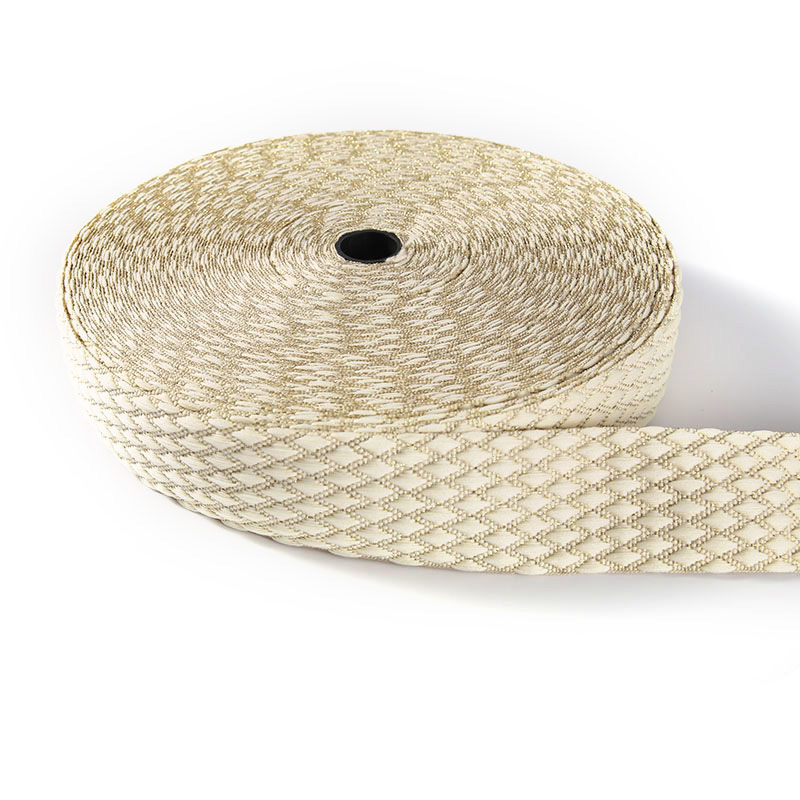Industry
 By Admin
By Admin
Understanding The Stretch Ratio In Different Types Of Elastic
When working with various types of elastic materials, understanding the stretch ratio is a key factor in choosing the right product for your application. The stretch ratio essentially refers to how much an elastic can extend relative to its original length. This property affects comfort, durability, and functionality, especially in products like elastic hook and loop straps, jacquard bands, and yoga shoulder straps.

Elastic materials come in many forms, each designed to meet specific needs. For instance, elastic hook and loop straps are often used for adjustable fastening in medical, sports, and industrial settings. Their stretch ratio determines how tightly they can secure objects without losing flexibility. A hook and loop strap with a moderate stretch ratio offers a balance between firmness and ease of use, making it versatile across different tasks.
Jacquard bands, on the other hand, are known for their decorative patterns and sturdy construction. While they serve aesthetic purposes, the stretch ratio is still important because it impacts how well the band conforms to body shapes or objects. A jacquard band with a controlled stretch ratio ensures that the design maintains its form without becoming loose or overly tight. This characteristic is essential for applications like waistbands, bag straps, or decorative trims.
Yoga shoulder straps provide another example where the stretch ratio plays a crucial role. Unlike elastic hook and loop straps or jacquard bands, yoga shoulder straps are designed to support stretching exercises and assist with posture. Their stretch ratio needs to be carefully considered so that they offer enough give to facilitate movement while providing stable resistance. A yoga shoulder strap that stretches too much may fail to provide the necessary support, whereas one with limited stretch can restrict motion.
Different types of elastic are made from various materials and constructions, pilot to differences in their stretch ratios. Natural rubber or latex-based elastics typically offer higher stretch ratios but may degrade faster over time, especially when exposed to heat or oils. Synthetic elastics, such as those found in many jacquard bands, tend to have more consistent stretch performance and better resistance to environmental factors.
When selecting an elastic hook and loop strap, it's useful to consider how much stretch is required for the specific use case. For example, if the strap is meant to hold cables or medical devices in place, a lower stretch ratio might be preferred to keep items firmly secured. Conversely, for applications needing flexibility and comfort, a strap with a higher stretch ratio can be more suitable.
Similarly, jacquard bands vary widely depending on their weave, thickness, and fiber content. Some jacquard bands are woven tightly for less stretch, which is ideal for structural support in garments. Others incorporate elastic fibers strategically to allow moderate stretch, enhancing comfort and fit. Understanding the stretch ratio in these jacquard bands helps manufacturers and designers achieve the right balance between form and function.
Yoga shoulder straps have unique requirements compared to elastic hook and loop straps or jacquard bands. They must provide predictable resistance to aid in physical therapy and exercise routines. The stretch ratio of a yoga shoulder strap often reflects the material blend and weaving technique. Straps made with higher elastic content typically allow more stretch, while those with reinforced fibers offer stability and longevity.
It's also important to consider the stretch recovery — how well the elastic returns to its original length after being stretched. Elastic hook and loop straps, jacquard bands, and yoga shoulder straps all benefit from materials that resist permanent deformation. This ensures that the product maintains its performance over multiple uses and washing cycles.
Measuring the stretch ratio can be done by extending the elastic to a certain length and calculating the percentage increase relative to the original length. For example, if a jacquard band originally measures 10 cm and stretches to 15 cm, it has a stretch ratio of 1.5 or 150%. Knowing this ratio helps in specifying elastics for different garment designs or product uses.
Manufacturers often provide stretch ratio ranges for their products, but it's wise to conduct your own tests, especially if the elastic hook and loop strap or yoga shoulder strap will be used in demanding conditions. The stretch ratio should align with the intended purpose, whether it is providing firm support, flexible comfort, or a decorative touch, as with jacquard bands.



 English
English Español
Español عربى
عربى Tiếng Việt
Tiếng Việt

